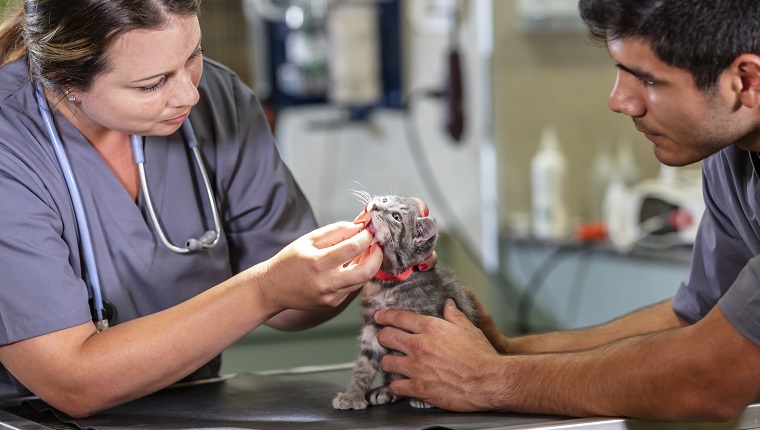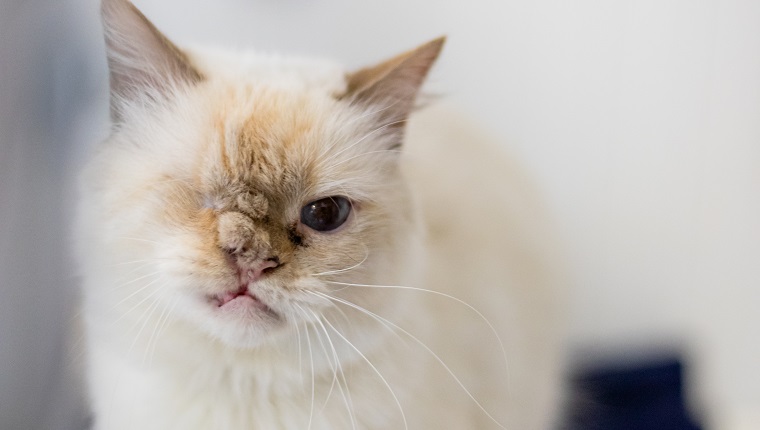Cleft palate in cats is a medical issue where a non-typical opening between the mouth and the nasal passage appears along the roof of a cat’s mouth. If untreated in young kittens, it can become a life threatening issue.
This is often an inherited condition, and certain breeds of cat, including the Siamese, Persian, and Norwegian Forest Cat breeds seem to be most at risk of developing it.
If you see signs that your cat might have a cleft palate, then you must consult your veterinarian for a proper diagnosis and treatment. Here’s what you should know about the symptoms, causes, and treatments of cleft palate in cats.
Symptoms Of Cleft Palate In Cats
Cleft palate in cats can produce a number of symptoms. Some of the most common symptoms include:
- Coughing
- Problems nursing
- Breathing issues
- Losing weight
- Nasal discharge
- Pneumonia (known as aspiration pneumonia)
Causes Of Cleft Palate In Cats

Cleft palates in cats are most often credited as being inherited. Additionally, purebred cats and certain breeds of cat seem to have a higher likelihood of developing the condition than other cats.
Some of the cat breeds most at risk include:
- Siamese
- Savannah
- Persian
- Norwegian Forest Cat
- Ragdoll
Veterinarian Treatments
If you worry that your cat is suffering from a cleft palate, then your veterinarian will want to physically examine them.
Most cleft palates can be identified through an oral examination; although, vets can also use X-rays and imaging techniques to monitor the presence of any other related medical conditions or underlying causes.
Surgery is the most common option for treatment. A lot of times, cats will require multiple surgeries, and oftentimes cats will need to be at least three or four months old before they will be ready to safely undergo the surgery.
While waiting for a surgery, young cats and kittens may need to be fed with a feeding tube. Your vet can further advise you about any precise feeding and dietary needs that your cat might have.
Have you ever adopted a cat who suffered from a cleft palate? Did they require any special care? Then tell us all about it in the comments below.




